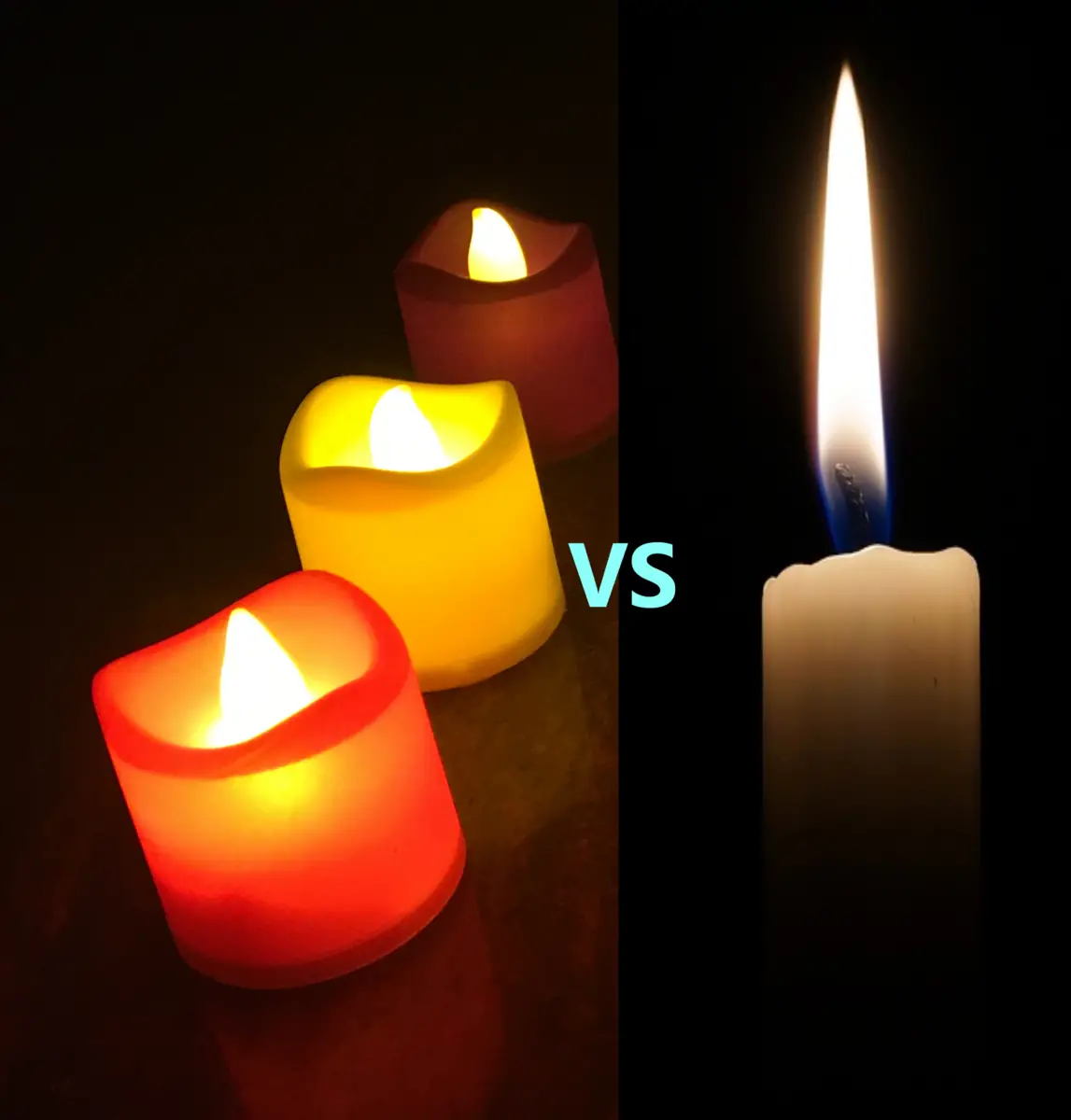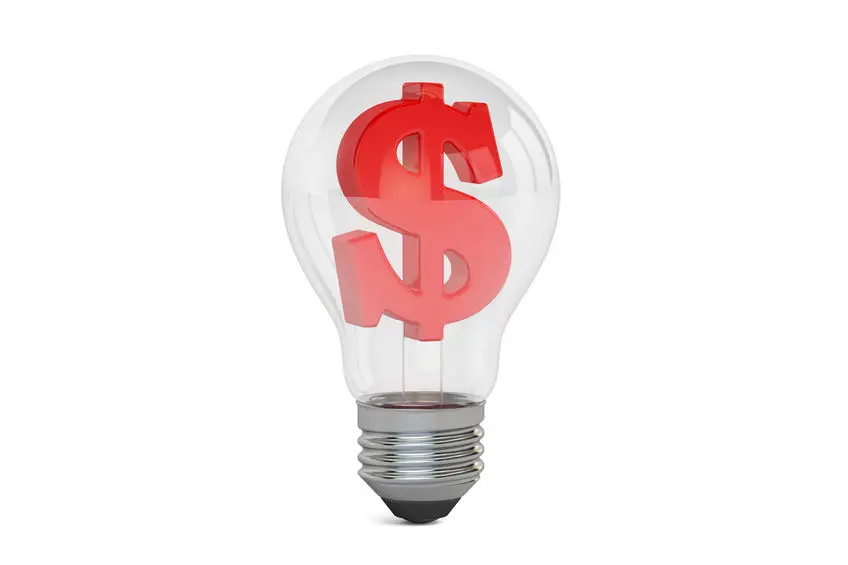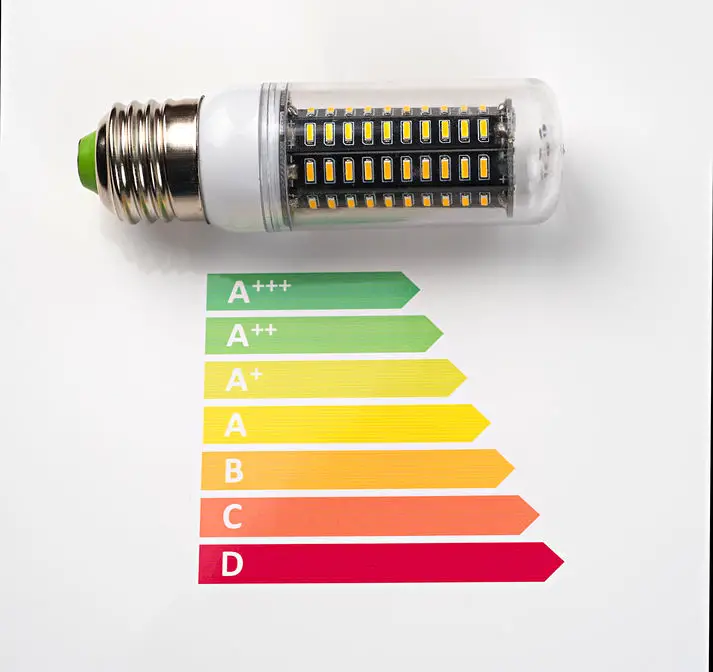The Cost Of Leaving Lights On For 1, 8 And 24 Hours
Leaving your lights on when they shouldn’t be is something often done by mistake or simply done by force of habit. As you can imagine however this will also increase your electrical bill since all lighting takes electricity to run.
Over 1 hour of time an incandescent bulb will cost around 0,75-1 cent to run while CFLs will only cost 25% of that and LED bulbs 20%. This means that over the course of 8 hours an incandescent bulb will cost 6-8 cents, a CFL 1,5-2 cents and an LED 1,2-1,4 cents.
These numbers are taken with a general electricity cost and bulb strengths currently used. For a more extensive look at the most common bulbs under an average electricity price, we encourage you to keep reading.
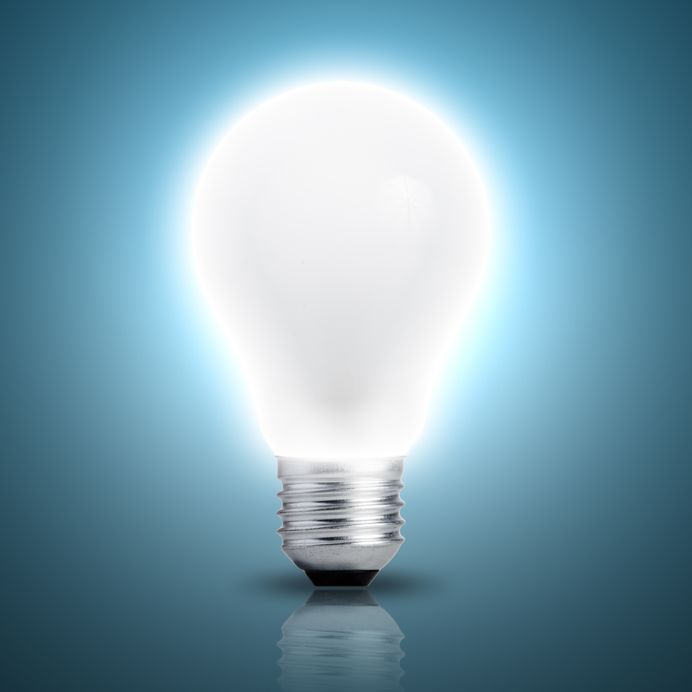
Contents
Different Lights Use Different Amounts Of Electricity
Before we begin to properly answer this question we need to look at how much electricity the different common lights actually use. This is important because the energy usage of different bulbs varies a lot depending on their construction but also their general strength.
For example, an LED bulb of 8 Watts will produce the same amount of light as an incandescent bulb will at 40 Watts, which will directly impact the result of how much they cost to leave on since they use a very different amount of energy as a result of LEDs being very efficient.
In order to account for this, we will include several different values of light bulbs and strengths in order to produce the most complete answer possible.
The bulbs we have chosen to look closer at are incandescent, halogen, CFL (Compact Fluorescent Light), Flourescent tubes and LED bulbs. While there are far more types of bulbs available these ones make up for a large majority of the most common bulbs currently in use.
A chart of how much energy (Watts) they use to produce the same amount of light (lumens) will look something like this:
| Incandescent Bulb | Halogen Bulb | CFL Bulb | LED Bulb | Fluorescent Tube | |
|---|---|---|---|---|---|
| 500 Lumens | 40W | 30W | 10W | 7W | 5W |
| 800 Lumens | 60W | 43W | 14W | 11W | 8W |
| 1100 Lumens | 75W | 53W | 19W | 15W | 11W |
| 1600 Lumens | 100W | 72W | 23W | 19W | 16W |
What this chart shows us is that energy usage will depend heavily on what type of bulb used and also how strong it is, like we previously described. The other clear information this tells us is that incandescent bulbs are extremely inefficient in comparison to the more modern lighting solutions such as LEDs.
However, both of these gets beat by the fluorescent tube when it comes to pure lighting efficiency. This is unusual since LEDs normally have a higher lumen/W than fluorescent lighting, however, since the bulb variation of LEDs has worse heat management than singular LED chips, the fluorescent light becomes more efficient.
The Cost Of Leaving Lights On
Now that we know that energy consumption of lighting has a few more variables than most expect we can begin to properly look at how much energy actually gets used when leaving lights on for extended periods of time.
When doing calculations about the total energy consumption of anything it is important to get the units right. Energy usage is usually measured in kWh (kilowatt-hours). This means how many thousand (kilo) watts of energy is used in an hour. So for example, a 100W lightbulb ran for one hour consumes 0,1kWh of energy, because 100W = 1kW and it was running for one hour. This also tells us that the Wattage that’s used to describe the bulb strength simply means how many Watts it uses in one full hour use.
Average Electricity Cost
Before doing these calculations we first need to get a good estimate of what the average cost of electricity is. This will depend a lot on the country you live in and where in the country you live since the price of electricity has a lot of factors and can fluctuate quite a bit.
For these reasons, it is best to do some extra searching yourself to get the most accurate number for where you live, but these are some averages across some of the most populated places in the world;
In the United States, the average cost of electricity across all states is about 13.19 cents per kWh, with the lowest cost currently being in Louisiana at 9.37 cents per kWh and the highest being Hawaii at 32.76 cents per kWh. For these statistics and for a way to check the average electricity cost in your state we recommend you go here.
In Europe, the average cost of electricity is 0.2126 Euros ($0,25) per kWh.
In Canada, the average cost of electricity is about $0.179, varying widely depending on if you live inside or outside the different territories.
In Asia, the average cost of electricity lies around $0.08-0,20 per kWh depending on where in Asia you live. This is because certain countries in Asia has a vast amount of oils and can therefore produce cheaper energy that way.
In Australia, the average cost of electricity is around $0,33 per kWh.
As can be seen from these statistics, the average cost of electricity around most of the world hovers around 20-25 cents per kWh. For this reason, we will use an average electricity cost of $0,2 per kWh for our following calculations. To make the following calculations more accurate for you in particular you need to figure out the kWh price where you live.
This information is usually easily obtainable from the electric bills you receive as they most likely either contain this number by itself somewhere in the paper or is easily calculated by dividing the cost of the electricity for the month with the number of kWh used that same month. This will give you the price of 1 kWh of electricity. If these numbers are not obtainable at all you can try calling your electricity provider to see how much the electricity actually costs.
Calculating Lighting Costs
Now that we have an electricity cost of $0,2 per kWh we can begin calculating the cost of leaving our lights on properly. When calculating the cost of all the lights mentioned at their respective wattages we get a table that looks like this:
| $0,2 per kWh | Cost for 1 hour | Cost for 8 hours | Cost for 24 hours |
|---|---|---|---|
| Incandescent 40W | $0,008 | $0.064 | $0.192 |
| Incandescent 60W | $0.012 | $0.096 | $0.288 |
| Incandescent 75W | $0.015 | $0.12 | $0.36 |
| Incandescent 100W | $0.02 | $0.16 | $0.48 |
| Halogen 30W | $0.006 | $0.048 | $0.144 |
| Halogen 43W | $0.0086 | $0.0688 | $0.2064 |
| Halogen 53W | $0.0106 | $0.0848 | $0.2544 |
| Halogen 72W | $0.0144 | $0.1152 | $0.3456 |
| CFL 10W | $0.002 | $0.016 | $0.048 |
| CFL 14W | $0.0028 | $0.0224 | $0.0672 |
| CFL 19W | $0.0038 | $0.0304 | $0.0912 |
| CFL 23W | $0.0046 | $0.0368 | $0.1104 |
| LED 7W | $0.0014 | $0.0112 | $0.0336 |
| LED 11W | $0.0022 | $0.0176 | $0.0528 |
| LED 15W | $0.003 | $0.024 | $0.072 |
| LED 19W | $0.0038 | $0.0304 | $0.0912 |
| Fluorescent 5W | $0.001 | $0.008 | $0.024 |
| Fluorescent 8W | $0.0016 | $0.0128 | $0.0384 |
| Fluorescent 11W | $0.0022 | $0.0176 | $0.0528 |
| Fluorescent 15W | $0.003 | $0.024 | $0.072 |
These calculations were done with the help of this tool. This tool is simple and very effective at calculating the cost of different appliances or electrical load by simply inputting the Watt it uses, how long it’s being used for and the electricity cost per kWh.
While the tool can do all these calculations for you it can also be good to know how the electricity is calculated yourself.
The way the cost is calculated is very simple. Firstly we need the wattage of the appliance in question, for this example, we will use a 100W incandescent bulb. 100W is equal to 0,1kW and therefore uses 0,1kW of energy per hour used.
With that information, we will also need the number of hours it is active for, which for this example we will use 24 hours.
Now that we know how long it’s been used for we can simply multiply the kW per hour by the number of hours, which looks like this;
0,1 kW * 24 hours = 2,4 kWh
With the number of kWh used in total we simply just need to multiply this by the cost of electricity per kWh, which we have established as $0,2 per kWh. This calculation looks like this;
2,4 kWh * $0,2 = $0,48
As can be seen, this aligns perfectly with the number seen in the table as this is the way all the electricity costs are calculated.
One thing to note about these calculations is that they are per bulb and not necessarily per fixture. If you have a fixture with 2 or more bulbs in them you simply add up the total Watts and do the calculations same from there.
Reducing The Cost Of Leaving Lights On
We have now seen how much lighting can cost when it is on for 1, 8 or 24 hours. However, there are ways we can decrease these costs, some of them being rather simple and some possibly being more challenging.
This reduction in cost is based on the mathematical formula we have already used to get the electricity cost, which looks a little something like this;
(Power in kW)*(Time in hours)*(Cost of electricity, $ per kWh) = Total cost in $
Looking at this formula we can simply look at each of the factors and think of ways we can reduce them. The first one we will look at is using more efficient light bulbs.
Using More Efficient Bulbs
Using more efficient light bulbs is a natural step in order to decrease the electrical cost. As we have described previously a 12W LED will cost 80% less to run than a 60W incandescent, which therefore makes it a great investment despite its slightly higher purchasing cost.
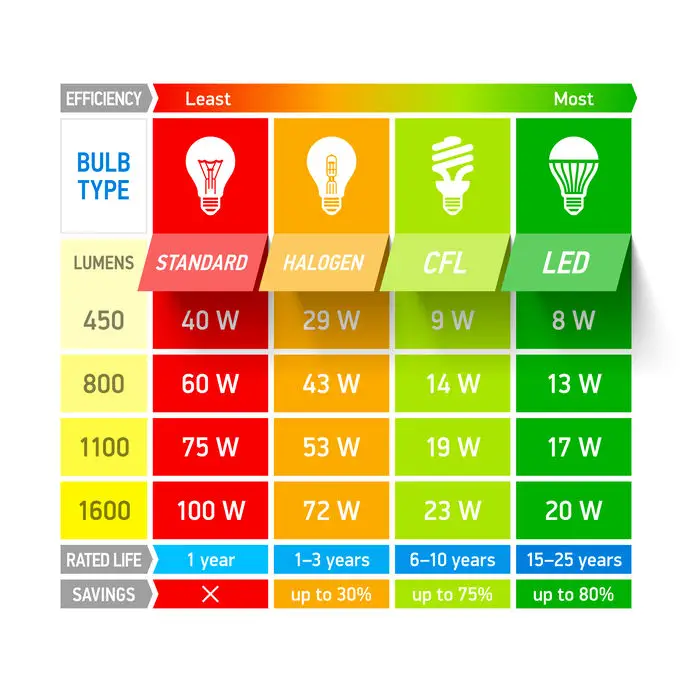
This being said it is very worth it to take a look at your current lighting throughout your home and consider switching out the larger electrical loads and replacing them with more efficient options, as this will change your electrical bill drastically for the better when done on a larger scale.
Dimming The Lighting
Another clever thing that can be done if you are not doing it already is simply dimming the lighting. When the light is dimmed it will use less energy since the light output will be less, meaning that if you dim the light by 50% it will subsequently also use 50% of its normal energy usage.
This being said it is not always ideal to dim your lighting down that much since you most likely need bright light to see what you’re doing and where you’re going, however, if possible it is also a good idea to be conscious of this and dim the lighting whenever possible as much as possible in order to minimize the electricity used.
Monitoring The On Hours
This itself should be quite self-explanatory, but one simple fix to spending less money on lighting is to simply not have it turned on when nobody is there.
This however is usually easier said than done since almost nobody does this by choice and often forget to turn the lights off. This can be solved in one of two ways. Either you will need to become extra cautious of this and make sure to turn the lighting off whenever you’re the last person out of a room that nobody will enter for a while.
The other option is to install features to turn the lighting off. This can happen in a few different ways, commercially motion detectors that turn lights off in the instance of long absence are a popular choice, though they are not exactly ideal for a home environment all the time.
An increasingly more popular option currently available is smart lighting, which can be turned on and off via an app on the phone or via an external remote. The phone app versions are gaining popularity due to how easy it is to get a digital live overview of the lighting in the home, but mostly for how much enjoyment users get out of being able to control their home lighting from their phone.
Decreasing The Electricity Cost
The last and probably most difficult thing you can do to decrease the cost of lighting is to try and decrease the electricity cost for your home overall.
The process of doing this can vary from country to country, but the most common way this happens is to simply do some research on what electricity deals you can get from different providers around where you live.
This is very ideal as a 20% decrease in electricity cost would not only save you money on lighting but instead save you money on every appliance and power-consuming object in your home. That being said it can be quite difficult to find a good electricity deal that allows for this, but searching for it can definitively be worth your time.
Summary
The main takeaway from this should be that leaving lights running is usually quite inexpensive, in the most extreme case costing only 2 cents per hour. However, this can quickly add up, as leaving that very same light on for 24 hours will cost almost half a dollar.
It should also be noted that making an effort in saving costs on electricity can really pay off in the long run, since we use artificial lighting every single day. Saving electricity will not only save you money but also save the environment if enough energy gets saved.

